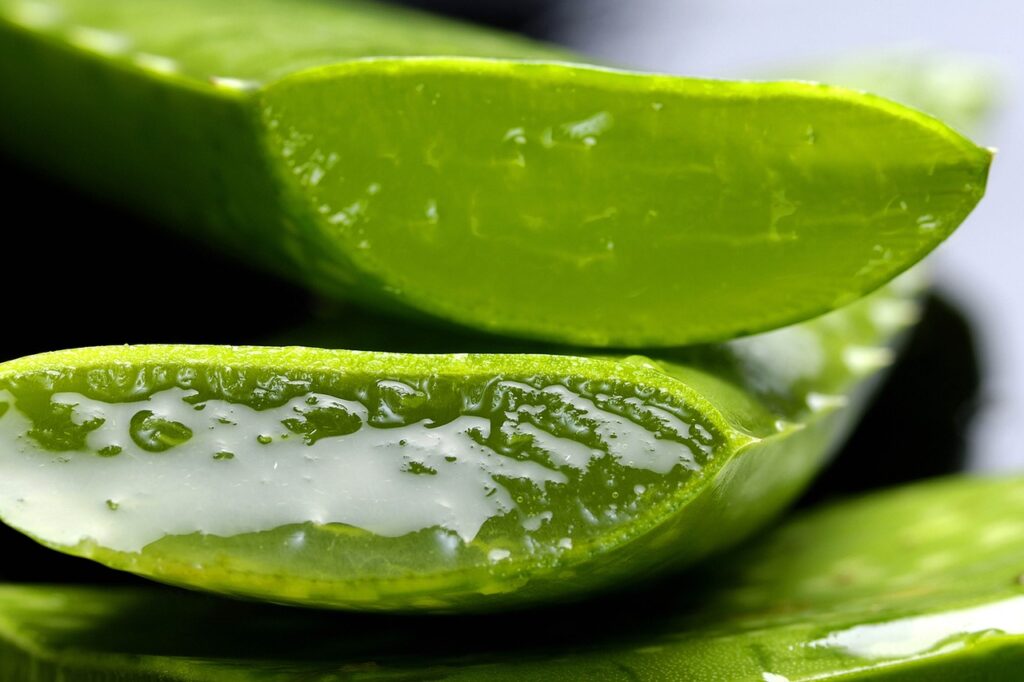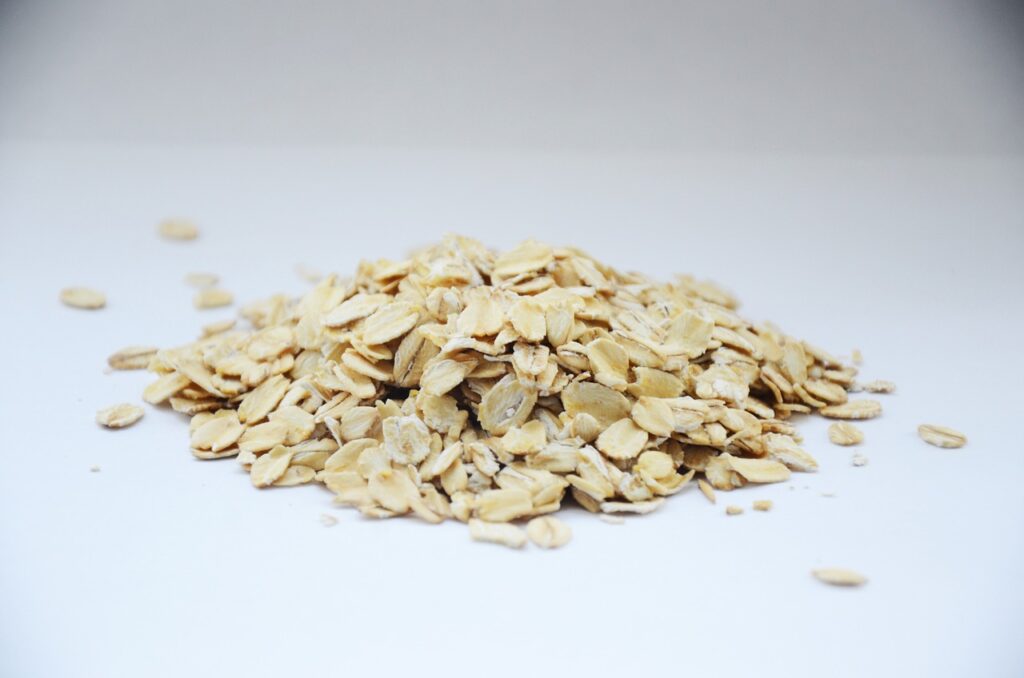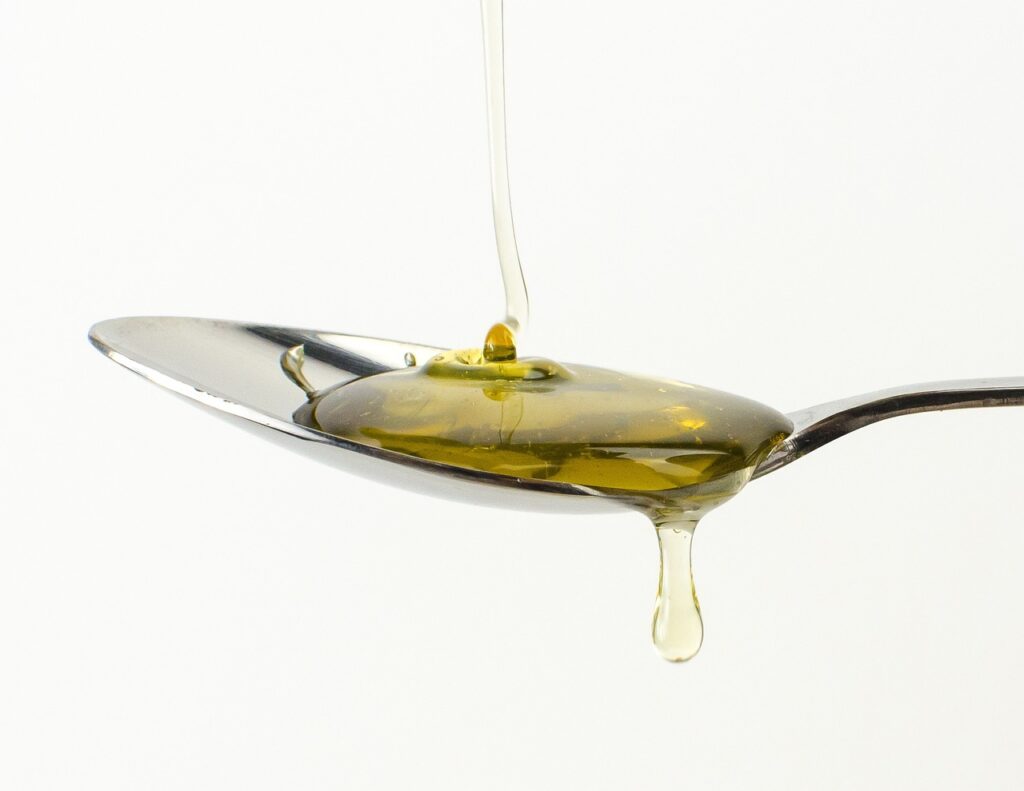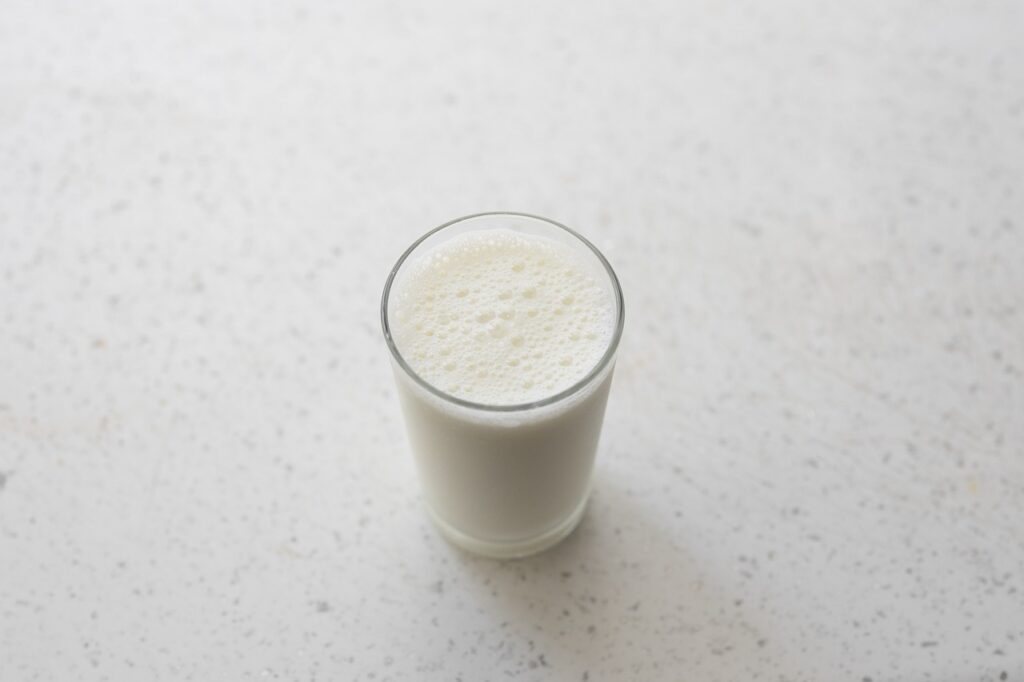What causes sunburn [on a biological level]?
What makes melanin brown when exposed to UV light?
What are the common symptoms of sunburn?
Is purple skin after sunburn normal?
Sunburn and peeling skin
Natural remedies for sunburns
10 minute read
Sunburn is a common consequence of exposing the skin to ultraviolet (UV) rays from the sun.
This exposure triggers a series of intricate biological processes that can lead to various effects, including the discomfort of sunburn.
According to the U.S. Department of Health and Human Services “More than 1 out of every 3 Americans reports getting sunburned each year. Sunburn is a clear sign of overexposure to UV (ultraviolet) rays, a major cause of skin cancer.”
The skin, an intricate organ comprising multiple layers, experiences damage from UV rays, particularly affecting the outermost layer known as the epidermis.
Did you know that the skin is actually our first layer of defense for our immune systems? It’s vital to upkeep a healthy skin barrier.
While it’s ideal to take preventative measures, understanding what’s happening to your body when you get sunburned and how you remedy the issue may be valuable information for overall health.
What causes sunburn [on a biological level]?
When the skin is exposed to ultraviolet (UV) rays from the sun, a series of biological processes occur that can lead to various effects, including sunburn. The skin is composed of multiple layers, and the damage from UV rays primarily affects the outermost layer, known as the epidermis.
Let’s delve into the biological processes and the layers involved:
UV Penetration and Absorption:
UV rays from the sun consist of UVA, UVB, and UVC rays. UVC rays are typically absorbed by the Earth’s atmosphere and don’t reach our skin. UVA and UVB rays penetrate the atmosphere and reach the surface of the skin. UVA rays penetrate deeper into the skin, while UVB rays are mostly absorbed by the epidermis.
Melanin Production:
Melanin is a pigment produced by cells called melanocytes. When the skin is exposed to UV rays, melanocytes produce more melanin in an attempt to protect the deeper layers of the skin from the damaging effects of UV radiation. This is what causes a tan, as increased melanin gives the skin a darker color.
DNA Damage:
Despite the protective measures like melanin production, UV rays can still cause damage to the DNA of skin cells. UVB rays are particularly responsible for causing direct damage to the DNA in the cells of the epidermis. DNA damage can lead to mutations and disruptions in normal cell functions.
Inflammation, Immune Response & Redness:
The damaged DNA triggers an immune response in the body, leading to inflammation. When cells are damaged from excess UV exposure, the body reacts by dilating blood vessels and this increases blood flow to the affected area. Increased blood flow brings immune cells, nutrients, and oxygen to the damaged tissue, facilitating the healing process.
This inflammation is what causes the redness, swelling, and pain associated with sunburn.
Cellular Death and Peeling:
In severe cases of sunburn, the damage can be so extensive that it leads to cell death. This is often why sunburned skin eventually starts to peel. The body is shedding damaged cells to make way for new, healthy cells to grow.
Repeated exposure to UV radiation over time can lead to cumulative damage to the skin, including:
- premature aging
- development of wrinkles
- increased risk of skin cancers such as melanoma, squamous cell carcinoma, and basal cell carcinoma
UV radiation is a major contributor to the development of skin cancer due to the DNA mutations it can cause. It’s important to protect your skin from excessive UV exposure by using sunscreen, wearing protective clothing, and seeking shade when necessary.
What makes melanin brown when exposed to UV light?
Melanin turns brown due to chemical changes that occur when it is exposed to UV light. The key process involves the absorption of UV radiation and subsequent oxidation reactions:
- Absorption of UV Radiation: Melanin, which is produced by melanocytes in the skin, absorbs UV radiation from the sun. This absorption protects skin cells from DNA damage caused by UV light.
- Oxidation of Melanin: When melanin absorbs UV radiation, it undergoes oxidation. The primary type of melanin in human skin, eumelanin, initially exists in a lighter form. Upon exposure to UV light, it oxidizes and darkens. This chemical change is largely due to the formation of more highly conjugated double bonds within the melanin polymer, which alters its color.
- Formation of Reactive Oxygen Species (ROS): UV light exposure generates reactive oxygen species (ROS), which can further oxidize melanin. These ROS can interact with melanin molecules, leading to the production of brown-colored compounds.
- Melanin Polymerization: The exposure to UV light can also cause the melanin molecules to polymerize more extensively. This increased polymerization results in a darker pigment as the melanin structure becomes more complex and absorbs more light in the visible spectrum.
The overall darkening of melanin when exposed to UV light is a protective mechanism, as the darker pigment provides greater protection against UV radiation by absorbing more of the harmful rays and preventing them from penetrating deeper into the skin layers. This is part of the skin’s natural response to sunlight and contributes to tanning.
What are the common symptoms of sunburn?
Sunburn symptoms can vary in severity depending on the intensity of the UV exposure and an individual’s skin type.
Symptoms typically start to appear a few hours after sun exposure and may peak within 24 to 48 hours. Common symptoms of sunburn include:
- Redness of the affected skin is a hallmark symptom of sunburn. The skin can appear pink or even deep red, depending on the severity of the burn.
- Sunburned skin is often painful and tender to the touch. The pain can range from mild discomfort to more intense pain, particularly in severe cases of sunburn.
- The affected area might become swollen due to the inflammation caused by the sunburn.
- Sunburned skin can feel warm or hot to the touch due to increased blood flow and inflammation.
- Sunburned skin can become itchy as it starts to heal. However, scratching the skin can worsen the condition and increase the risk of infection.
- After a few days, sunburned skin might start to peel as the body sheds damaged skin cells. [This is a natural part of the healing process.]
- In severe cases of sunburn, blisters can develop on the affected area. It’s important not to pop or puncture the blisters, as this can increase the risk of infection.
In cases of severe sunburn, individuals might experience symptoms like fatigue, headache, fever, and nausea. These symptoms are signs that the body is under significant stress and inflammation.
Over time, repeated sunburns can lead to long-term skin damage, such as premature aging, wrinkles, and an increased risk of skin cancer.
Is purple skin after sunburn normal?
Sunburn can appear purple or purplish-red, especially if the burn is severe. This purple or purplish-red discoloration is often seen in conjunction with other symptoms of sunburn, such as redness, swelling, and blistering.
The purple coloration can occur due to the inflammation and damage to the blood vessels within the skin. When the skin is exposed to excessive UV radiation, it triggers an immune response and inflammation. This inflammation can cause blood vessels near the skin’s surface to dilate (widen), leading to increased blood flow to the affected area. In some cases, this dilation of blood vessels can lead to a purplish hue, especially in individuals with fair or sensitive skin.
Additionally, if sunburn is severe enough to cause blisters, the fluid within the blisters can contribute to the discoloration, making the affected area appear purplish.
It’s worth noting that the coloration of sunburn can vary based on an individual’s skin type, the severity of the burn, and the overall health of their skin.
Sunburn and peeling skin
Peeling skin after sunburn is a natural part of the healing process. While it might not be enjoyable, peeling skin is generally considered a sign that the damaged skin is shedding to make way for new, healthy skin to emerge.
Here’s why peeling occurs and how to manage it:
1 – Regeneration of Skin:
After sunburn, the body’s natural healing mechanisms go into action to repair the damage caused by UV radiation. As part of this process, the skin starts to shed the damaged outer layers, which can result in peeling.
2 – Removal of Dead Skin Cells:
Peeling helps to remove dead or damaged skin cells that are no longer functioning properly due to the sunburn. This helps to prevent these cells from potentially causing infection or slowing down the healing process.
3 – New Skin Growth:
Underneath the peeling skin, new skin cells are forming. As the old, damaged skin peels away, the new skin cells gradually come to the surface.
While peeling skin is a normal part of healing, there are a few things to keep in mind:
Avoid Picking or Peeling:
It’s important to resist the urge to pick at or peel the skin prematurely. Picking at peeling skin can increase the risk of infection and slow down the healing process.
Keep Skin Moisturized:
Applying a moisturizing lotion can help alleviate dryness and discomfort associated with peeling skin. Look for a lotion that doesn’t contain harsh or irritating ingredients.
Stay Hydrated:
Drinking plenty of water can help maintain your skin’s moisture levels and support overall healing.
Avoid Harsh Scrubs:
Avoid using harsh exfoliants or scrubs on peeling skin, as this can further irritate the skin and delay healing.
Avoid Further Sun Exposure:
While your skin is healing and peeling, it’s important to protect it from further sun exposure. UV radiation can continue to damage healing skin and increase the risk of additional sunburn.
Natural remedies for sunburns
There are lots of questions out on the internet about how to deal with sunburn like…”can you spray tan with sunburn” , “can you tattoo with sunburn”, “is sauna good for sunburn”, or “can you use vicks on sunburn” – for these we can’t say for sure, but what we can say is that there are a few homeopathic remedies you can try to help soothe and heal your sunburn faster.
Check out these natural sunburn remedies below & better understand the biology behind how they help:
1 – Aloe Vera
Aloe vera is a popular natural remedy for sunburn relief due to its potential anti-inflammatory, soothing, and moisturizing properties. Data shows that aloe vera helps to speed up the healing process.

It contains anti-inflammatory compounds and various nutrients, vitamins (vitamins C & E), and enzymes that may support the skin’s natural healing process.
Additionally, aloe vera’s high water content provides necessary moisture to help repair the skins barrier all while providing a cooling sensation that may help relieve any discomfort or pain.
2 – Oatmeal baths (finely ground oatmeal added to bathwater)
Oatmeal, also contains compounds, called avenanthramides, which have been shown to have anti-inflammatory properties.

It is also rich in beta-glucans, which are polysaccharides that help retain moisture in the skin. This moisturizing effect is particularly important for sunburned skin, which tends to be dry and dehydrated.
To top off the amazing benefits of oatmeal for sunburn, it creates a protective film on the skin, this film can help soothe and protect the skin from further irritation.
3 – Honey
Honey has been used for centuries as a natural wound healer due to its potential antibacterial and wound-healing properties.
Much like the natural other remedies for sunburn, honey too is rich in anti-inflammatory compounds which help reduce swelling, redness, and inflammation caused by damaging free radicals (from UV radiation).

Interestingly, honey exhibits hygroscopic properties, allowing it to extract moisture from the surroundings, effectively dehydrating harmful bacteria. Its substantial sugar content and low pH level further contribute to inhibiting the growth of these microbes.
Lastly, it’s important to note that honey has an acidic pH. This acidity can stimulate the release of oxygen from the blood, a crucial factor in wound healing. Moreover, the acidic pH helps decrease the levels of substances known as proteases, which can hinder the process of wound healing.
4 – Cold milk compress
Milk is sometimes used as a home remedy for sunburn relief due to its potential soothing and moisturizing properties. While milk is not a substitute for proven medical treatments, it does contain certain components that might provide temporary relief for some individuals. For instance…
Milk is rich in proteins and fats, which can effectively moisturize the skin and create a protective shield to prevent additional moisture loss.

Additionally, milk contains lactic acid, a mild exfoliant that aids in gently removing dead skin cells from the skin’s surface. This action promotes smoother and less irritated skin.
Furthermore, certain compounds found in milk, like whey proteins, are thought to possess subtle anti-inflammatory properties. These properties could potentially assist in diminishing redness and inflammation.
Takeaway
Exposure to UV rays from the sun triggers a series of processes in the skin, leading to effects like sunburn. The skin’s outermost layer, the epidermis, is primarily affected by UV damage. UV rays can damage DNA, potentially causing mutations. This damage triggers inflammation, an immune response, and redness, with severe cases leading to cell death and peeling. Repeated UV exposure can lead to skin damage, premature aging, wrinkles, and increased cancer risks.
Common sunburn symptoms include redness, pain, swelling, warmth, itchiness, peeling, and even blisters. Purple discoloration can occur in severe cases due to inflammation and blood vessel damage. Peeling skin is a natural healing process, as damaged skin sheds to make way for new skin growth.
Natural remedies like aloe vera, oatmeal baths, honey, and cold milk compresses may help soothe and accelerate sunburn recovery by leveraging anti-inflammatory, moisturizing, and wound-healing properties.

